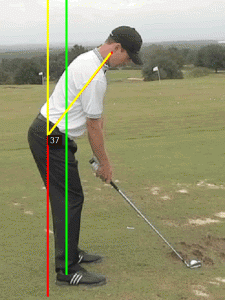In my estimation, I’d say there are atleast 8 valid, complete golf swing models out there that someone could take from beginning to end and successfully strike a golf ball. But there is only one way to biomechanically use the body as it was designed to function. Of course, my preference is for my students to learn the Rotary Swing because it is FAR simpler to learn and easy to perform on a consistent basis with minimal upkeep. And, as I’ve now been informed by biomechanics experts, it’s the only swing model they have found that is biomechanically correct. That being said, there are things that can be refinded to help protect the joints and use the large muscles even more than I already teach to my students. Today I’m going to talk about one of those “Rotary Swing 2.0″ modifications.
The setup is something where you can see a million different tour pros do it a million different ways and be completely functional. However, there is only one way for your joints to line up and for the human body to perfectly balanced. Being perfectly balanced allows the golfer to perform other movements correctly and with less effort, so this is a critical component to the swing as you can imagine. Now, don’t get to caught up in all the details just yet, I’m only going to be talking about one piece of the setup in this post and will be explaining the rest in far greater detail with videos in the Member’s Vault.
Examine the photo below:

















Looks more like Kevin Sutherland who is leading Fry today! He has nore spine angle but weight back and is a good ball striker.